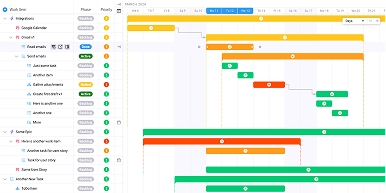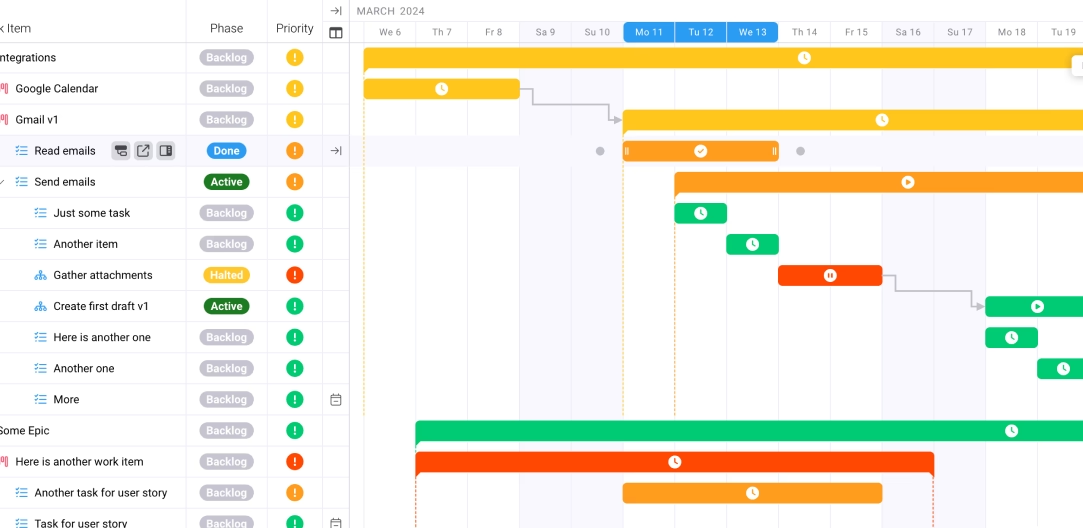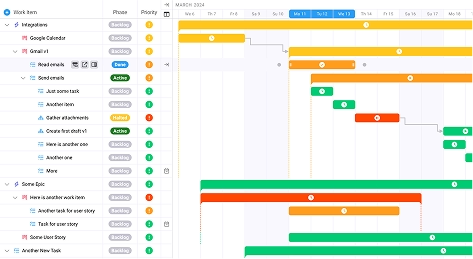
How to Measure and Report Marketing ROI That Impresses Clients Every Time
Key takeaways:
- Strategic Attribution Framework: Implement multi-touch attribution models that capture the complete customer journey across all touchpoints, providing clients with transparent visibility into marketing performance
- Client-Centric KPI Selection: Focus on business-impact metrics that directly align with client objectives, limiting reports to 5-10 key performance indicators that tell a compelling story
- Real-Time Dashboard Implementation: Deploy automated reporting systems that reduce manual processing time by up to 80% while providing clients with 24/7 access to campaign performance data
- Predictive ROI Forecasting: Combine historical performance data with forward-looking insights to help clients make informed budget allocation decisions and strategic planning choices
In an era where marketing budgets face unprecedented scrutiny, the ability to measure and report marketing ROI has become the ultimate differentiator between agencies that thrive and those that merely survive. 83% of marketing leaders now consider demonstrating ROI as their top priority, up from 68% five years ago, yet paradoxically, most agencies still struggle to translate their marketing impact into compelling client narratives. The challenge isn’t just calculating numbers—it’s crafting ROI reports that don’t just inform but inspire confidence, secure budget increases, and transform skeptical clients into passionate advocates. This comprehensive guide will show you exactly how to measure and report marketing ROI that impresses clients every single time.
The Current Challenge – What’s Broken in Marketing ROI Measurement
The marketing measurement landscape has reached a critical inflection point. While 84% of global marketers say they’re either extremely or very confident in their ROI measurement capabilities, up from 69% in 2023, the reality tells a different story. Only 29% consider themselves very successful at using attribution to achieve strategic objectives, revealing a dangerous disconnect between confidence and competence.
This measurement crisis stems from several fundamental challenges plaguing modern marketing organizations. Attribution fragmentation continues to undermine accurate ROI calculation, with customer journeys now spanning an average of 6-8 channels before conversion. 83% of enterprise marketers report that limitations in their attribution capabilities directly impact budget allocation decisions, creating a vicious cycle where poor measurement leads to suboptimal investments.
Privacy-first regulations have further complicated the measurement landscape. Traditional tracking methods are becoming obsolete as third-party cookies disappear and consumers increasingly reject tracking consent. This evolution has forced marketers to reimagine their measurement strategies, often without adequate preparation or tools.
The client expectation gap represents another critical challenge. Client sophistication regarding marketing analytics has increased and real-time reporting expectations have become standard. Modern clients demand not just data visualization but comprehensive interpretation, strategic guidance, and actionable recommendations tailored to their specific business objectives.
The Strategic Framework – The IMPACT ROI Measurement System
Successful marketing ROI measurement requires a systematic approach that transforms complex data into clear business insights. The IMPACT framework provides a structured methodology for measuring and reporting ROI that consistently impresses clients:
I – Identify Business-Critical Metrics: Begin by aligning measurement efforts with client business objectives. Revenue growth, customer acquisition cost, lifetime value, and market share expansion should drive metric selection rather than vanity metrics like impressions or reach.
M – Map Customer Journey Touchpoints: Document every interaction point across the complete customer journey, from initial awareness through post-purchase advocacy. This comprehensive mapping enables accurate attribution and identifies optimization opportunities.
P – Prioritize Multi-Touch Attribution: Implement attribution models that capture the complexity of modern customer journeys. Media mix modeling, multi-touch attribution, and incrementality testing work together to provide holistic performance insights.
A – Automate Data Collection and Integration: Eliminate manual data processing bottlenecks by implementing automated reporting systems. Automated dashboards reduce manual data processing and spreadsheet consolidation, often cutting reporting time by 80%.
C – Contextualize Performance with Benchmarks: Present ROI data within industry and competitive contexts. Historical performance trends, seasonal variations, and market conditions provide essential context for accurate performance interpretation.
T – Tell Compelling Data Stories: Transform raw metrics into narrative-driven insights that clearly communicate marketing value and future opportunities. Strategic storytelling transforms reporting from compliance exercise into strategic consulting opportunity.
Implementation Tactics – Five Proven ROI Measurement Strategies
Strategy 1: Implement Unified Attribution Modeling
Modern attribution requires sophisticated approaches that go beyond last-click attribution. 61.4% of marketers said that they were looking to augment measurement strategies with better and faster media mix modeling, recognizing that comprehensive measurement demands multiple methodologies working in concert.
Deploy a three-tier attribution approach combining first-party data collection, statistical modeling, and incrementality testing. Start by implementing comprehensive time tracking systems to capture all marketing touchpoints and their associated costs. Use probabilistic modeling to fill attribution gaps where deterministic tracking isn’t possible.
Establish baseline performance metrics through controlled testing. A/B tests and holdout groups provide causal evidence of marketing impact, validating attribution model outputs. Document methodology transparency to build client confidence in measurement accuracy.
Strategy 2: Design Client-Centric KPI Dashboards
Effective ROI reporting requires careful KPI curation that balances comprehensiveness with clarity. Most agencies limit the number of marketing KPIs to a maximum of 10 per client according to the 2024 Marketing Agency Benchmarks Report, recognizing that overwhelming clients with excessive metrics diminishes report effectiveness.
Create tiered dashboards that serve different stakeholder needs. Executive-level dashboards should focus on business outcome metrics like revenue attribution, customer acquisition cost, and return on ad spend. Operational dashboards can include more granular metrics like click-through rates, conversion funnel performance, and channel-specific ROI.
Implement dynamic date range functionality allowing clients to explore performance across different time periods. Real-time data feeds ensure stakeholders always access current performance information, reducing the need for ad hoc reporting requests.
Strategy 3: Establish Predictive ROI Forecasting
Transform ROI reporting from historical analysis to strategic planning tool by incorporating predictive analytics. Combine historical performance data with market trends, seasonal patterns, and business growth projections to generate forward-looking ROI forecasts.
Develop scenario planning capabilities that model ROI outcomes under different budget allocation strategies. Show clients how marketing investments in various channels and campaigns would impact future business performance. This proactive approach positions agencies as strategic advisors rather than tactical executors.
Use statistical confidence intervals to communicate forecast reliability. Transparent uncertainty quantification builds client trust and sets appropriate expectations for future performance variability.
Strategy 4: Optimize Cross-Channel Performance Measurement
Break down channel silos to provide holistic campaign performance insights. A Nielsen study shows that digital advertisements yield a 300% higher ROAS compared to traditional media, but accurate measurement requires understanding how channels work together synergistically.
Implement unified measurement frameworks that capture cross-channel interactions and their collective impact on business outcomes. Use customer journey analytics to identify optimal channel sequence and timing strategies. Document how channels support each other throughout the conversion funnel.
Establish consistent measurement taxonomies across all marketing channels. Standardized naming conventions, goal definitions, and conversion tracking ensure data comparability and eliminate reporting discrepancies.
Strategy 5: Create Actionable Insight Generation
Transform ROI data into strategic recommendations that drive client business growth. 29.59% of marketers said data helps improve ROI, highlighting the critical importance of translating measurement into optimization opportunities.
Develop automated insight generation capabilities that identify performance anomalies, optimization opportunities, and strategic recommendations. Machine learning algorithms can surface patterns human analysts might miss, providing deeper strategic insights.
Structure recommendations using clear priority frameworks. High-impact, low-effort optimizations should receive immediate attention, while strategic initiatives requiring significant investment need detailed justification and implementation planning.
Measuring Success – KPIs and Metrics That Matter
Successful ROI measurement requires focusing on metrics that directly correlate with business success. Revenue attribution remains the ultimate benchmark, but supporting metrics provide essential context and optimization insights.
Primary Business Impact Metrics should form the foundation of any ROI reporting framework. Revenue attribution shows direct marketing contribution to business growth. Customer acquisition cost and lifetime value ratios demonstrate marketing efficiency and long-term value creation. Email marketing ROI stands at 4,200% or 42x, illustrating how different channels contribute varying levels of business value.
Attribution Accuracy Indicators help validate measurement reliability. Cross-device tracking coverage, identity resolution rates, and data quality scores ensure attribution models provide accurate insights. Confidence intervals and statistical significance testing communicate measurement reliability to stakeholders.
Operational Efficiency Metrics demonstrate agency value beyond campaign performance. Reporting automation rates, dashboard adoption metrics, and insight implementation tracking show how measurement systems improve client operational efficiency.
Budget allocation optimization represents a critical success metric. Marketers who compute their ROI are 1.6 times more likely to be awarded higher budgets for their marketing activities, demonstrating the direct business impact of effective ROI measurement and reporting.
Client Satisfaction Indicators provide essential feedback on reporting effectiveness. Dashboard usage rates, report engagement metrics, and client feedback scores help optimize reporting strategies for maximum impact.
Future Considerations – Emerging Trends and Next Steps
The ROI measurement landscape continues evolving rapidly, driven by technological advancement, privacy regulations, and changing client expectations. Successful agencies must anticipate these trends to maintain competitive advantage.
Artificial intelligence and machine learning will revolutionize ROI measurement capabilities. Predictive analytics, automated insight generation, and real-time optimization recommendations will become standard expectations rather than differentiating features. Privacy-preserving measurement techniques will replace traditional tracking methods, requiring new technical capabilities and methodological approaches.
First-party data strategy becomes increasingly critical as third-party data sources diminish. CRM systems and client portal integrations will provide rich behavioral data for attribution modeling. Marketing teams must develop comprehensive data collection strategies that respect privacy while enabling accurate measurement.
Advanced attribution modeling will integrate online and offline touchpoints seamlessly. Connected TV, podcast advertising, direct mail, and in-store experiences will contribute to unified customer journey measurement. Cross-platform identity resolution capabilities will become essential infrastructure requirements.
Real-time optimization capabilities will transform campaign management workflows. Instead of monthly reporting cycles, marketing teams will use continuous measurement feedback to optimize campaigns dynamically. This shift requires robust technical infrastructure and sophisticated analytical capabilities.
The future belongs to agencies that can combine technical measurement sophistication with strategic business consulting. ROI reporting will evolve from compliance requirement to strategic competitive advantage. Agencies that master this transition will secure long-term client relationships and sustainable business growth.
Successful marketing ROI measurement and reporting requires systematic approaches, sophisticated tools, and strategic thinking. The IMPACT framework provides a proven methodology for transforming complex data into compelling client narratives. By implementing unified attribution modeling, designing client-centric dashboards, establishing predictive forecasting capabilities, optimizing cross-channel measurement, and creating actionable insights, agencies can consistently deliver ROI reports that impress clients and drive business growth. The future demands agencies that can measure and report marketing ROI with unprecedented accuracy and strategic insight—positioning measurement as a core competitive advantage rather than necessary overhead.
Frequently Asked Questions
What’s the most important ROI metric to track for client reporting?
Revenue attribution remains the primary metric, showing direct marketing contribution to business growth. Support this with customer acquisition cost and lifetime value to provide complete ROI context.
How often should agencies provide ROI reports to clients?
Monthly reporting works for most clients, with real-time dashboard access for ongoing monitoring. Quarterly strategic reviews should include deeper analysis and forward-looking recommendations.
What’s the biggest mistake agencies make in ROI reporting?
Focusing on vanity metrics instead of business impact measures. Clients care about revenue, customer acquisition, and business growth—not impressions or reach metrics.
How can small agencies compete with larger firms in ROI measurement?
Leverage automated reporting tools and focus on client-specific insights rather than complex attribution models. Personalized analysis often outperforms sophisticated technology without strategic insight.
What ROI benchmarks should agencies use for client comparisons?
Industry-specific benchmarks vary significantly. Focus on client historical performance, competitive analysis, and season-adjusted trends rather than generic industry averages.
How do privacy changes affect ROI measurement accuracy?
Privacy regulations require shifting to first-party data collection and probabilistic attribution models. While measurement becomes more complex, focusing on owned data sources can actually improve long-term accuracy.
What’s the best way to present negative ROI results to clients?
Present challenges transparently with specific optimization recommendations. Frame negative results as learning opportunities that inform better future strategies and budget allocation.
How should agencies price ROI measurement and reporting services?
Consider measurement complexity, data integration requirements, and strategic consulting value. Many agencies include basic reporting in retainer fees while charging separately for advanced analytics and strategic insights.
What technical skills do agencies need for advanced ROI measurement?
Data analysis capabilities, marketing automation expertise, and basic statistical knowledge form the foundation. Partner with specialists or invest in training for more sophisticated attribution modeling.
How can agencies prove their ROI measurement accuracy to skeptical clients?
Use transparent methodologies, provide confidence intervals, validate results through incrementality testing, and benchmark against third-party measurement sources when possible.









